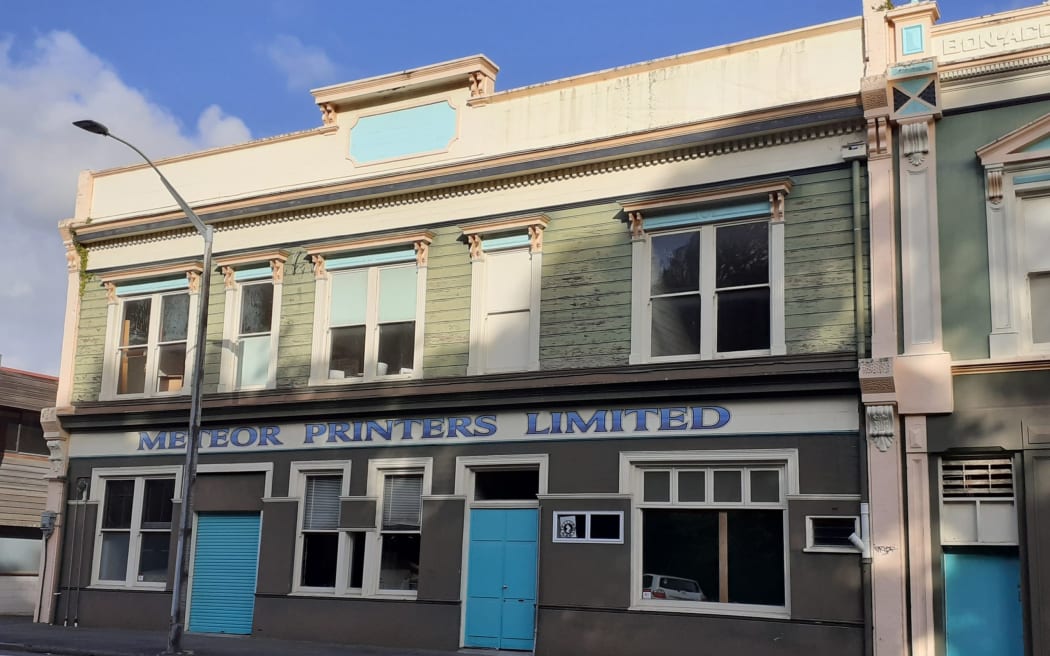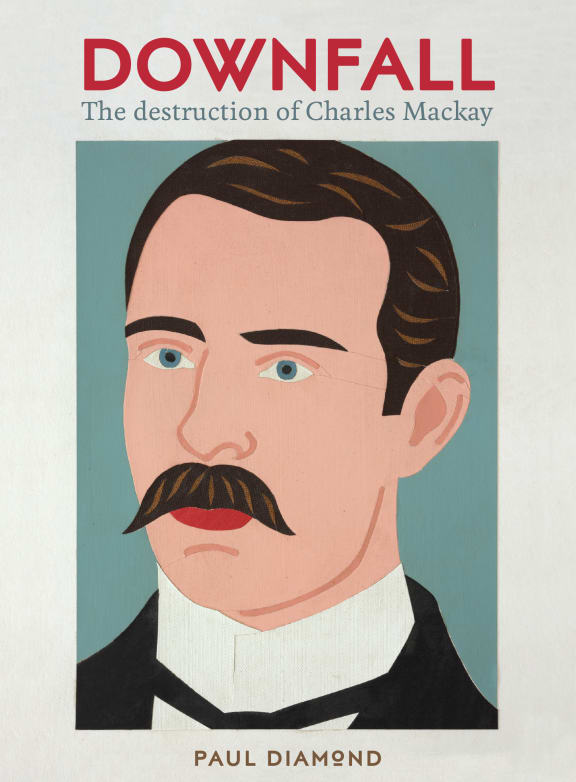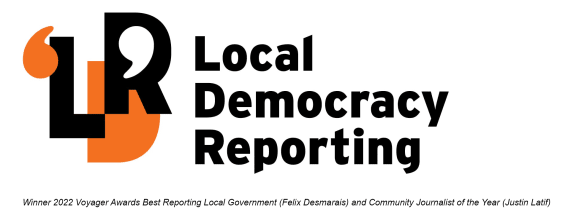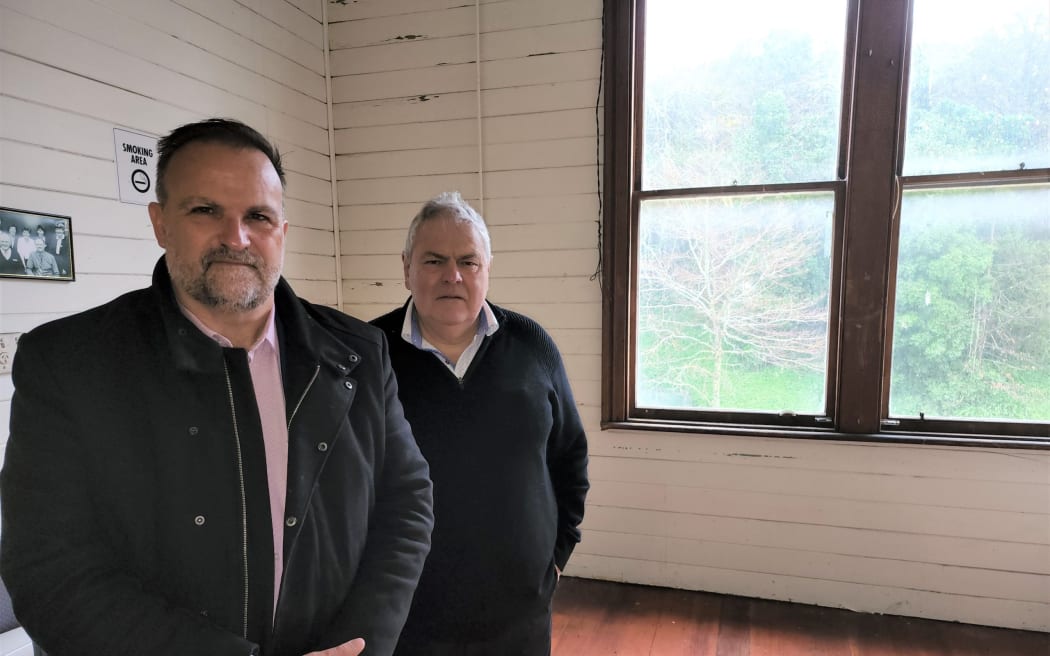
Then-Whanganui mayor Charles Mackay shot returned soldier D’Arcy Cresswell in the mayor’s private office, right, on the second-floor. Photo: Supplied/ Local Democracy Reporting – Moana Ellis
His mayoralty was revoked, his portrait removed from council chambers and his name ground off the foundation stone of the town’s spectacular new art gallery.
Now the story of the controversial mayor, whose legacy the town of Whanganui tried to erase from history, could be memorialised in a Heritage New Zealand listing.
In 1920, Whanganui mayor Charles Mackay – a distinguished lawyer who married into Whanganui high society – shot young returned soldier and poet D’Arcy Cresswell in an office above the old town’s main street.

Paul Diamond explores Charles Mackay’s story in his book ‘Downfall’, which is being published by Massey University Press Photo: Supplied/ Massey University Press
The investigations and trial that followed revealed Mackay’s homosexuality and his entrapment in a campaign of blackmail by Cresswell, shocking the city and scandalising New Zealand.
Whanganui businessman James Barron, a former district councillor, has applied for the Edwardian gentlemen’s offices in which the incident occurred to be listed under Heritage New Zealand’s Rainbow List project.
The project is an initiative to improve representation of queer history.
The scandal destroyed Mackay’s life.
He pleaded guilty to attempted murder. Sentenced to 15 years’ hard labour, his law practice was bankrupted, his wife changed her name and broke off all contact, and his relationship with his children was severed. The town went as far as to change the name of a street that had been named after the now-disgraced mayor.
After seven years in jail, Mackay was exiled to Europe, never to return. Less than two years later, he was shot dead in Berlin by a police sniper during the May Day riots.

James Barron (left) and Warren Ruscoe in the Edwardian gentleman’s offices in Whanganui, scene of the notorious incident that led to Whanganui mayor Charles Mackay’s downfall in 1920. Photo: Supplied/ Local Democracy Reporting – Moana Ellis
Barron’s Heritage List application centres on the Ridgeway Street building’s cultural and historic significance because of its association with the Mackay incident.
He says the city that for more than 60 years buried Mackay’s memory should do more to recognise his contribution to civic development and the place of his story in New Zealand history.
“The story of Mackay is the story of Whanganui and also the story of the LGBTQI community. It’s a story of political plotting and vengeance, it’s a tale of extortion and attempted murder, the jailing of a mayor and the way he was erased from the town record,” Barron said.
“The story unfortunately ends with his death but even that is no ordinary ending. It is poignant, it is sad and it is a cracking good story which deserves to be well known.”
Barron said preserving New Zealand’s heritage went beyond protecting bricks and mortar.
“It’s about preserving our stories. In our LGBTQI communities, our stories have not been passed down from generation to generation. Part of what we’re doing is reclaiming and actually learning our history. What was it like to be a queer person in the past?
“A heritage listing would give Rainbow communities an opportunity to know our history, to learn about and tell those stories which otherwise get lost.”
He said the Whanganui incident 100 years ago sheds light on a time when homosexuality was a dark and dangerous secret. Homosexual acts by males were criminal offences in New Zealand until 1986.
“Mackay is in the court record mounting his defence that he suffered from the ‘affliction’ of homosexuality and he was undertaking hypnotherapy to address this.
“In the 1920s, homosexuality was viewed as a disease. Of course, we’ve known for a long time that that’s a nonsense. But consider that it’s only this year that Aotearoa has banned conversion therapy. The forces which would deny the lives of LGBT people have been very successful and very active for a long, long time.”
There has been speculation that Cresswell, who was also gay, was hired for the shakedown in a political conspiracy to rid Whanganui of its driven and far-sighted mayor.
Barron was impatiently awaiting the release, on 10 November, of the book
Downfall by Paul Diamond, which examines the Whanganui affair and the motivations of Mackay, Cresswell and Whanganui itself.
“Mackay was very progressive, responsible for driving a lot of change and development, including bringing in electric trams and building the Sarjeant Gallery, which had only just opened at the time of the incident,” Barron said.
His projects were costly and not always well received.
“Whanganui had, and probably always has had, a strong conservative streak. As well as that, Mackay wasn’t on the best terms with the RSA, which was very influential in those days. But it’s not known exactly what happened.
“From what I’ve read and heard, it seems there was an established but hidden gay community in Whanganui at that time. The community would have very much protected itself. To become outed was to die a social death and probably be jailed.
“I’m hoping Paul Diamond’s book will have more research and information that may shed light on it all.”
Heritage New Zealand senior heritage advisor and Rainbow List project lead Kerryn Pollock said the Whanganui building was one of the first nominations received for the Rainbow List.
“It’s a perfect fit for our Rainbow List project. We were really delighted to receive that nomination late last year and we’re actively working on it.”
Pollock had visited the building and an assessment of its heritage values was underway, including its history and the people associated with the building. The application was expected to go before Heritage New Zealand’s governing board in April for a decision.
Pollock, too, was awaiting Diamond’s book, which she hoped could help in determining the building’s historical significance and how Mackay’s story fits into New Zealand history.
“The building does have modest architectural value, but it’s really the Charles Mackay story that elevates this building. My thinking right now is that the association with Mackay and all he means to our history in this country is what will make that an important heritage place.”
Pollock said it was also important to acknowledge work by local activists to rehabilitate Mackay’s reputation during the 1980s homosexual law reforms.
The two-storey building at 27 Ridgeway Street was built in 1902 for Charles Duigan and was once the office for Waitōtara County Council. It had housed printers since the 1930s.
The building’s owner Warren Ruscoe supported the application.
“I avoided listing it for years because it could limit what I can do. I’m half terrified about how it might affect the business, and half excited that the building’s history is being recognised,” Ruscoe said.
Barron said the Rainbow community in Whanganui wanted to leverage off the building’s status to advance a better understanding of queer history.
“In New Zealand it’s said that marriage equality has been achieved – we’ve ticked the boxes, everything’s fine – no, it’s not fine, because even though we’ve achieved legal equality in most areas, it doesn’t change some of the legacy of hatred which goes on.
“There’s still an underbelly or a legacy of thought that being gay is wrong.”
Downfall: The destruction of Charles Mackay, by Paul Diamond,
is scheduled to be available in book shops on 10 November.
Local Democracy Reporting is Public Interest Journalism funded through NZ On Air 


